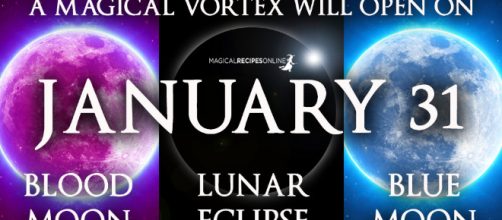A Total Lunar Eclipse is predicted to occur in the early hours of January 31. This is the first lunar occultation of the year and is special as it will overlap three different lunar events that include a blue moon, a super moon and a Blood Moon. On this date, the satellite will have reached a full stage, so it will be the second full moon in January. On this same date, it will be at perigee-closest distance to earth and the eclipse will give it a reddish hue due to the sun´s rays, especially as the red of the spectrum will be bent. This type of lunar occultation is the first one in more than 150 years.
The last one occurred in 1866.
Lunar eclipse
This type of eclipse occurs when the sun, earth and moon are aligned in a straight line and the earth is between the sun and the moon. The satellite is in full stage and the eclipse happens when the shadow of the earth completely blocks the light from the sun. Not all light is blocked during the eclipse, as the blue light from the spectrum is more scattered than the red giving the moon a reddish hue (blood moon). Unlike solar eclipses, a lunar eclipse is not dangerous to watch and the eclipse may last for hours and be seen in many parts of the world.
Super Blue Blood Moon
A blue moon is called that because two full moons have occurred in one calendar month.
Supermoons are those that occur when the moon is at its closest approach (perigee) on its orbit around the earth. A blood moon gets its name because, during a lunar occultation, the moon gets a reddish tint due to the Rayleigh scattering. This total lunar eclipse is called a Super Blue Blood Moon because three moon events are going to take place on a single night. Blue moons take place around twice in two and a half years.
Where and when to see the Eclipse
The entire total eclipse will only be seen from Australia, western US, Alaska and Hawaii. Those travelling on a cruiser on the Pacific Ocean will have a better chance to see this phenomenon. Russia and the Philippines are well set to see the total eclipse.
Asia, Europe, Central America and Parts of Africa will only see part of the eclipse. The lunar eclipse will be a chance for scientists to study the surface of the moon. During a lunar eclipse, the temperature on the surface of the moon drops. This drastic change in temperature will help scientist understand regolith and the way in which it changes over time.
The totality of the lunar eclipse will begin at 4:51 a.m and last till 6:08 a.m. Pacific Standard Time.


